A feminine and elegant wedding dress with an open back is stylish and at the same time bold. Wearing it, the girl demonstrates her figure and posture.
Dresses of this type are very popular. But sometimes sewing problems arise: it is difficult to cope with the fit on the figure, to connect the lace with the main fabric. The complexity is often added by the design of the back. Thus, before you start sewing, choose a style that fits your body shape. The correct choice will solve all the issues with the design and technology of sewing. How to sew a wedding dress?
Types of cuts
Dresses with a cut on the back are divided into 3 groups:
- Cut out on the back above the waist line. This type will suit girls with narrow hips and protruding belly, as well as if there is no bend from waist to hip. A special feature in tailoring is cutting the top of the undercut when the cut is deepened. During the fitting extra centimeters are noticeable. It is not necessary to remove them either in the sides or in the center of the back, since the fit at the chest level is disturbed. Thus, all the excess need to be removed in the rear reliefs, that is, hide in the recesses on the back.
- Cut to waist line. Suitable for girls without a protruding belly and with a good drop from waist to hip. It is necessary to take into account when building a pattern, that the entire recess is cut off, and the back bend is not taken into account. If the back is not covered with lace, it is necessary to lay an inclined undercut. Its depth should be 1 cm in the direction of the notch. Better shape cutout to model on the layout. It is worth noting that the mesh plays an important role in the fit of the back. When using it, you can take into account the presence of the undercut. Also, if the dress is buttoned, then when designing the middle slice, the bulge of the shoulder blades and the degree of bending of the back should be taken into account.
- Cutout below waistline. In this model, the requirements for the figure are very tough: a beautiful form of the back, well-groomed skin and a pronounced waist, as well as a moderate reversibility of the figure, since it is rather difficult to reach the cut-out to the back. If the back is reversible, you can insert a mesh or lace. It will also hide defects on the skin. When making the pattern, one should take into account the undercuts at the junction of the dress and the lace at the level of the bend of the figure.
The basis for the dress
When modeling a dress with an open back, you need to think in advance what will ensure the tension of the neckline to maintain shape. As an option it could be:
- heavy skirt;
- corsage;
- corset in front of the dress;
- panties body
The basis is also selected depending on the type of figure:
- Girls with protruding breasts can sew dresses based on bodysuits, bodice and corset dresses.
- For a figure with a protruding abdomen and abdomen at chest level - corset and corset dresses with a depth of cut from the waistline of 4-6 cm. Dress based on body is not recommended except in certain cases.
- For figures with a pronounced belly - only corsage dresses, as this type of figure requires re-shaping. The depth of the cut from the waist line should be 6-8 cm.
Strap shape
The presence of straps in dresses with an open back is necessary. The type and width can be varied. Instead of straps may be lace.
Transparent mesh, which completely or partially closes the back, will look very impressive. But to sew such a wedding dress will not be very easy.
It is necessary to approach the choice of straps in order not to spoil the look of the dress and not to emphasize the figure flaws. Therefore:
- For figures with protruding shoulder blades, thin straps are selected. Lace or mesh can be inserted below the level of the shoulder blades, so as not to emphasize the slouch.
- For the figures, where the shoulder blades and buttocks are on the same line, use thin or medium width straps. The back can be decorated with lace in part or in full.
- For figures with protruding buttocks, you can use any straps, as well as lace, which partially or completely closes the back.
- For figures with protruding breasts and buttocks in models with a cut below the waist at the bottom it is better to use lace. It will contribute to a better fit, you can also choose loose styles skirts.
A dress with a single straps - asymmetry that attracts attention - looks original.
Modeling a dress with a cut to the waistline
Before modeling the openwork straight dress with a deep neckline on the back with or without sleeves, take all necessary measurements:
- chest girth
- girth under the breast,
- product length
- back height
- Prepare the basic pattern for the dress.
Pattern back
Transfer the following lines to the finished basic pattern:
- reduce shoulder 2 cm from armhole. Measure its length - 4 cm;
- draw a neckline back, as on the pattern. At your discretion, the cutout shape can be deeper or less;
- make the desired length of the skirt.
Pattern forehand
Sequence of actions for the front pattern:
- Transfer to the side dart on the chest.
- Decorate the shoulder, as well as on the back (length - 4 cm).
- At 2 cm lift neckline.
- Draw a cut-boat, like on a piece.
- Model a narrow one-seam 3/4 sleeve.
Pattern skirts
You can also model the skirt according to your preferences. For example, a small train can be added to the direct bottom of the dress.
It will be obtained by adding a wedge. Cut out the train as 1/4 of a circle. Making the bottom, the line can sag more, then along the fold line the loop will be longer (dashed line in the drawing).
The dress can be completely fit, then use parallel and conical dilution to form the assembly.
A train is obtained if a wedge is built along the middle section of the skirt, while the front part of the skirt is made shorter than the back. The loop is already taken into account.
The skirt can be modeled short with a long tail.
Sleeve Pattern
- take the necessary measurements: sleeve length, chest semi-circle and sleeve length to the elbow;
- draw a rectangle with the points A, B, C and D. Where the sides AB and CD are 38 cm wide. This will be the width of the sleeve. It is calculated by the formula: (48: 3 + 3) x 2 = 38. That is, 48: 3 - 1/3 of the semicircle of the chest (in the construction, substitute your parameters), to which add 3 cm and multiply by 2 cm.
- measure the length of the sleeve on the AC and BD lengths + 2 cm. For example, if the length is 58 cm, add 2 cm. Get 60 cm.
- The height of the okat is measured as follows: from t. A, set aside 15 cm to the bottom and place m. P (m. P1 on the CD segment). It is measured as follows: 20: 4 × 3 = 15, where 20 is the depth of the armhole of the base of the dress;
- 33 cm from m. And put a dot L - sleeve length to elbow. Draw a straight line and at the intersection with the sun put t. L1;
- for okat sleeves, divide the side AB into 4 parts and put a dot, as in the pattern;
- t. About connect with t. P and P1, put on the intersection line t. O3 and O4. The segments indicated by the dotted line, divide in half. In the PO3 segment, retreat downwards by 0.5 cm, in O3O - upwards by 2 cm. Similarly, make with the OO4 and O4P segments. Draw a line of okat on new points.
Sewing
How to sew a wedding dress with your own hands:
- Vykryte of 1 piece of lace on the back and before, 2 parts of the sleeves.
- From the lining material - all the details of the front and back.
- Sew the lining with the front lace and back.
- Make shoulder seams and stitch the sleeves.
- Sew side seams.
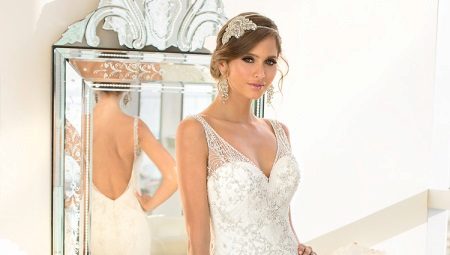
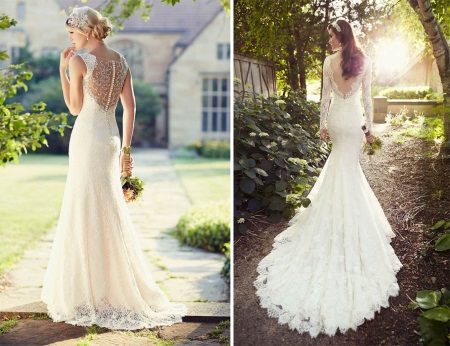
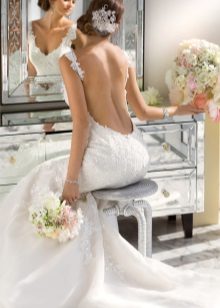
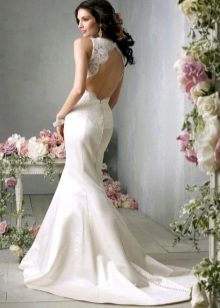


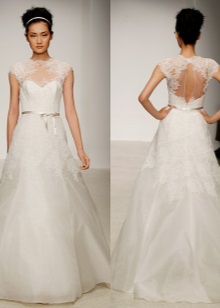

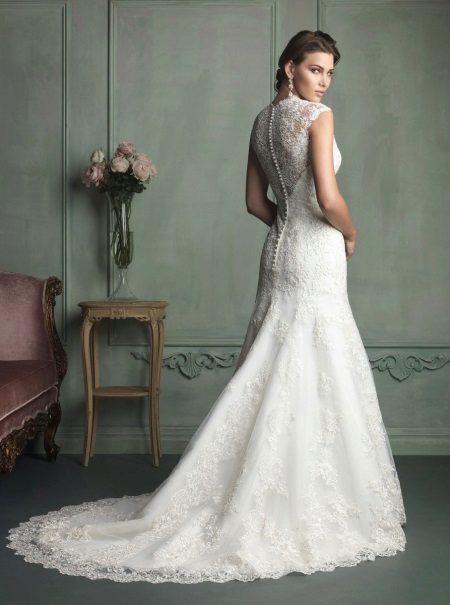
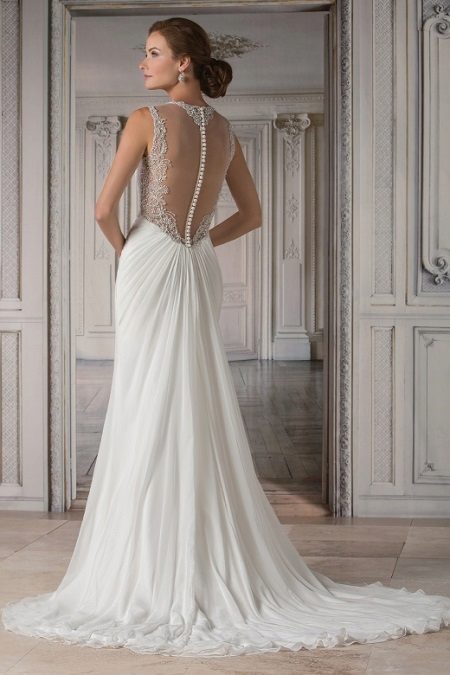
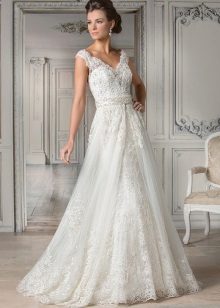
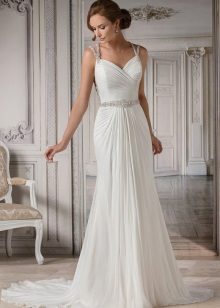

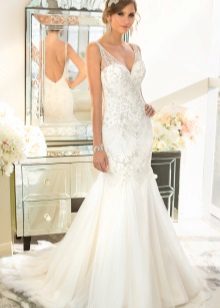

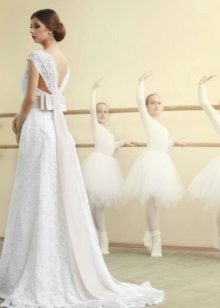
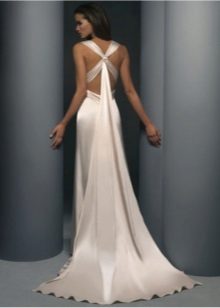
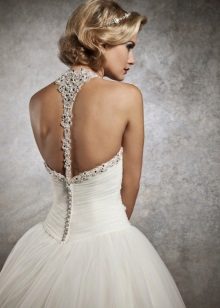
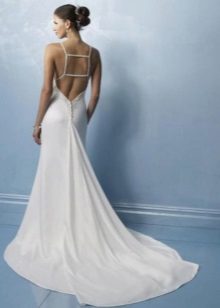


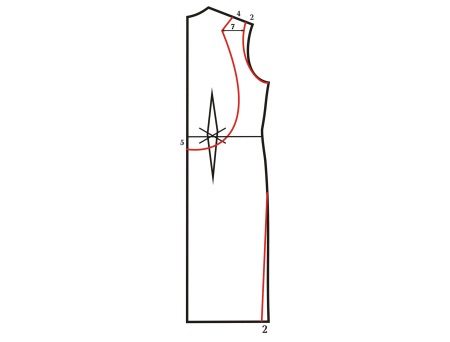
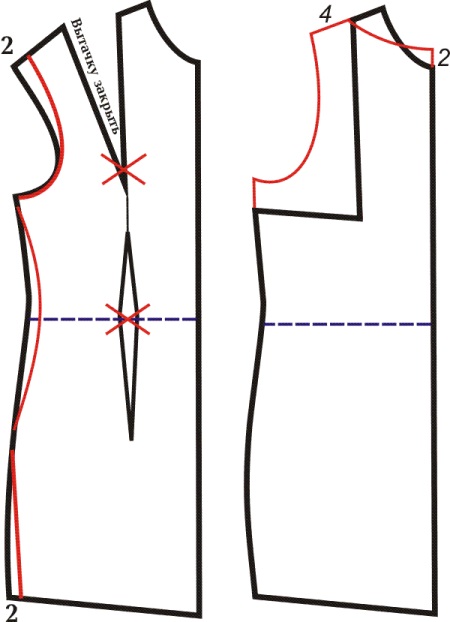
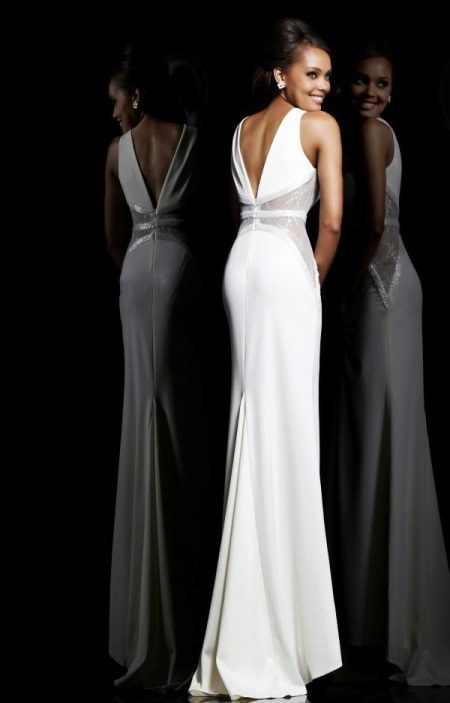


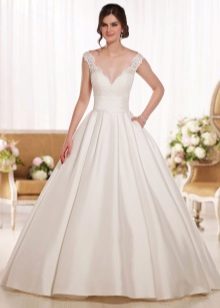
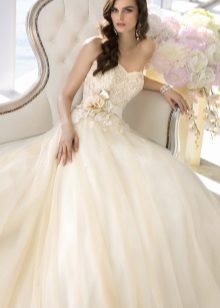
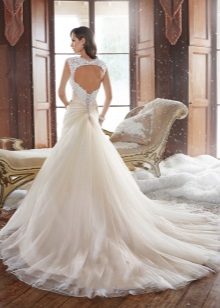
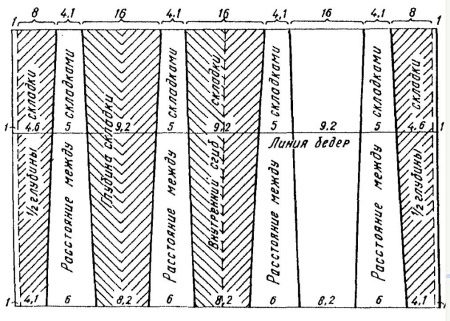
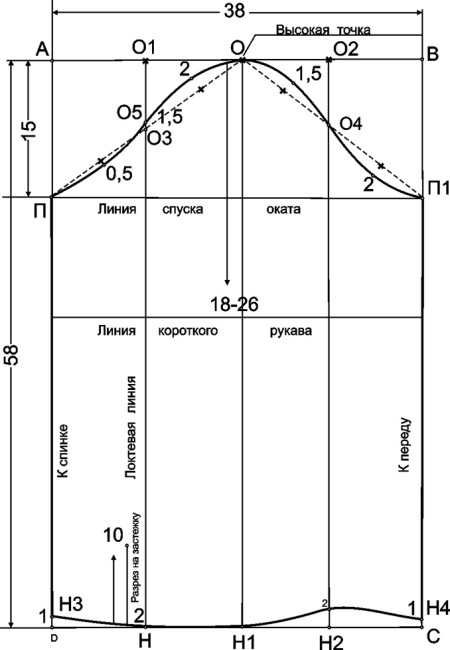











Everything is clear and accessible written) Thank you!